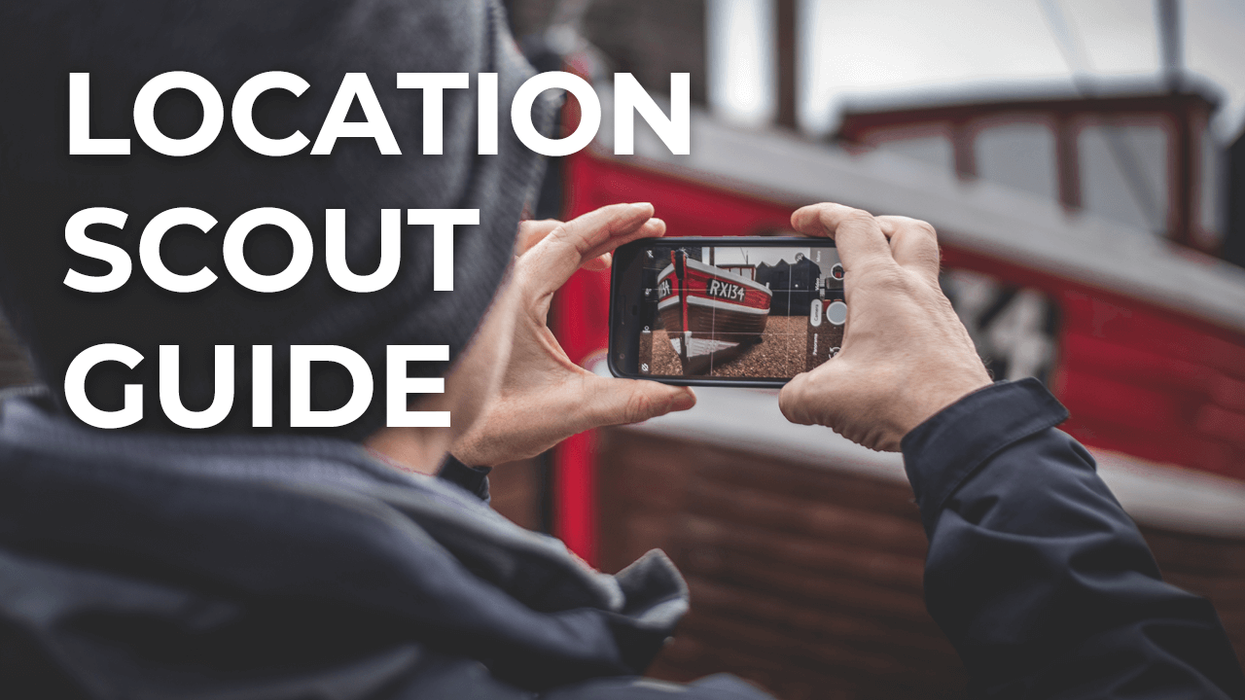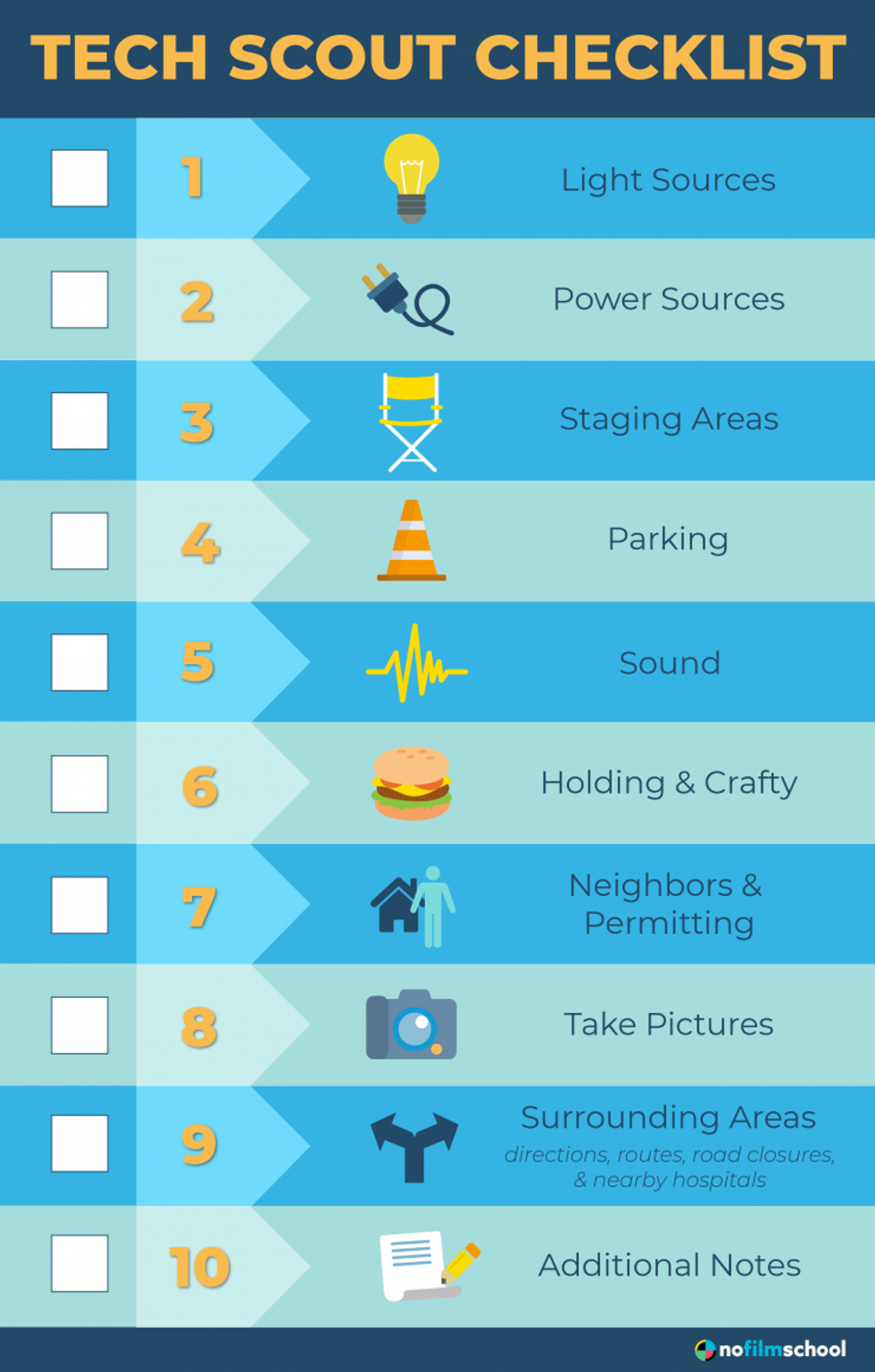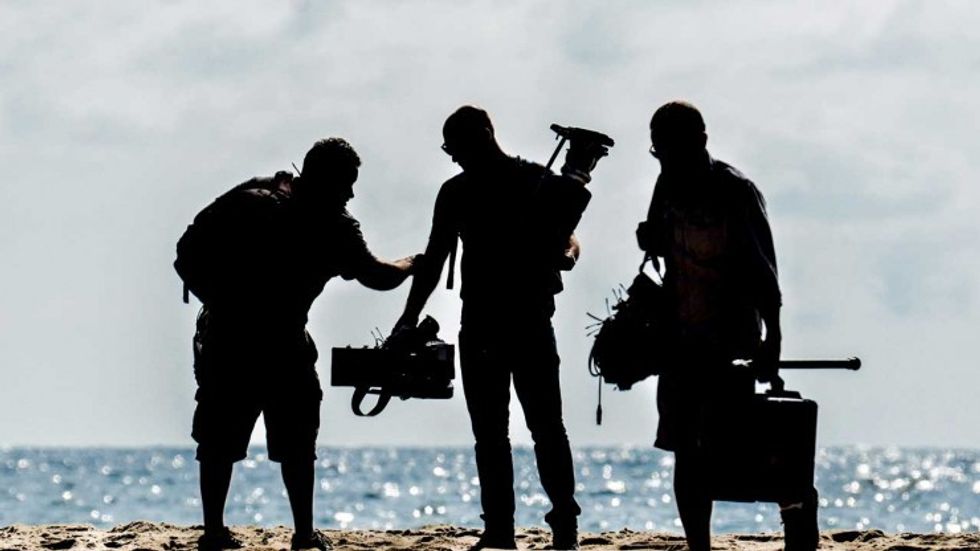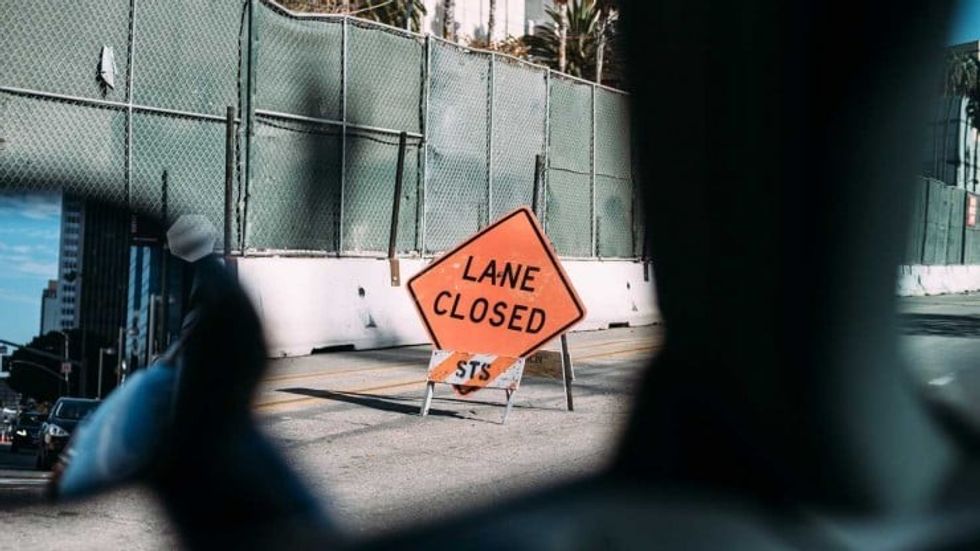Free Movie Location and Tech Scout Guide
Movie location scouting is a critical task in taking a vision from the page to the screen.

Location scouting is where the idea of what a scene looks like has to become a reality.
However, there are many factors to consider beyond just what a location looks like.
Your entire shoot day could sink or swim based on qualities of your location that have nothing to do with it being the perfect fit visually.
How do you identify these reasons? How do you truly pick the right filming locations? Well first off, check out these 8 tips from a location manager, and these 5 things that will make location scouting easier.
In this post we’re going to show you how to do a thorough and effective location scout. We're also throwing in some scouting tips and a free downloadable tech scout checklist.
Check out the tech scout checklist here, and then we’ll dig into each section below:
Movie location scouts start with the tech scout checklist
Knowing if the location is the right for the story is the biggest factor, and we won't cover that in this list. That's something you need to determine from project to another.
You might also think a lot of these considerations are only factors on a bigger shoot. But that is not the case.
Even on a small shoot, you’ll have a larger footprint than you think. Even running and gunning can require certain resources. A place to eat. A place to sit down. A place to put the camera.
Our checklist goes down in order of importance, but it’s good to keep in mind that everything on the tech scout checklist is important, and anything you overlook on it can become a critical failure.
So let’s use this list as a way to avoid that. A way to prep for the shoot, identify the right locations and identify why the right location might have certain problems.
No place to put your talent might mean renting an RV. A neighbor who complains might mean needing to permit with the city.
Needing to permit with the city might mean needing more money.
See? All these things are interconnected, and you can’t know what dominoes will begin to fall if you don’t go into the location scout aware!
Filming locations are everywhere, but they are not all created equal!
What is a tech scout?
A tech scout is when you gather the keys, or department heads, for a final walk-through of your location. The tech scout checklist is a great way to make sure that you maximize your effectiveness, leave no major stone unturned, and record any important data.
This will happen pretty close to when you start shooting, with time for minor adjustments but ideally not big changes to the plan. Think of the tech scout like a chance to troubleshoot and game plan with the brain trust of the crew.
Light sources at your filming location
How much natural light is there at the filming location in question? One of the first things you want to identify on a movie location scout is where the light sources are, how strong they are and what times of day they will affect your shoot.
Are there are large windows? Will you need to black them out? Is this a night shoot? A day shoot? Both?
Remember that while these are initial questions to ask, the tech scout is when you’ll need to make specific final preparations based on this data with your key crew.
Power sources at your filming location
After you’ve determined what kind of natural light your prospective location will be dealing with, it’s time to consider your power sources. On the tech scout, this will be the Gaffer’s primary concern at each stop.
But you still want to keep an eye on it before you get to set.
What kind of outlets are available. How much power can you run before blowing a circuit?
Think about how much power you’ll need. Will this location require a generator?
If your scene takes place in a desert, but it’s a night shoot, how will hair and make-up work? They’ll need portable light sources.
If your scene is being shot in your apartment, but you rented a big lighting kit, how can you run all the lights without blowing a fuse?
And where are you going to charge batteries?
Keep these questions and more in mind when it comes to Tech Scout Checklist item 2!
Finding staging areas at a movie filming location
A stage location is quite simply where you’ll ‘stage gear’ during the shoot. If you’re shooting in an office building hallway, you’ll need to have a place where your crew can put c-stands, lights, and other gear that needs to be on hand. A production brings with it a lot of stuff, even a small one. Where does that stuff “live” while you shoot the scene?
It can live on the truck, but most crews and DP’s will want to have some things off the truck, particularly if truck parking is in a lot, maybe across the street, or down a flight of stairs.
Remember that time is one of your most precious resources. How long does it take to get a flag from the truck up to set?
Your crew will want to know where they can stage the things they’ll need on hand.
Keep this in mind while reviewing any filming locations.
Find Parking On Your Movie Location Scout
Parking can be one of the trickiest elements to any shoot. If you’re really lucky your location comes with a lot. In most instances, this won’t be the case.
Parking is a multi-faceted issue for a crew at a filming location as well, and it really should be at the fore of your mind as you scout.
Where the cast and crew will park is just one aspect of this. They can park, lock their car, and come to set. They don’t need their car again.
Where will the truck park? How many trucks do you have? Even if you don’t have a truck, maybe you have a van with gear.
Consider trailer parking. Generator parking. The list goes on.
Parking can be extremely expensive, and so can parking tickets. You might want to contact a nearby lot and strike some kind of deal.
You might also need to arrange a shuttle to set from a lot. If parking is unclear, or unmanaged, then you will lose time on set. It’s a rookie mistake to assume your crew can find parking, and not specify/arrange it at your location in advance. If the DP is circling the block looking for a parking space, then ends up running late and parking illegally you have a list of new problems.
First, your DP is late. So that cost you. Secondly, your DP might get a ticket. That will also cost you. Third, your DP is angry. He might not work with you again and you might end up with a bad reputation.
All can be avoided if you make sure to handle parking on your location scout.
What does your filming location sound like?
This one is easy enough to figure out. Spend a little time at your location listening to what the ambient noise is like. Traffic? Planes? Are kids playing at a playground nearby? A loud air conditioner?
Help your production sound team out in advance by getting a sense of what problems you might have to confront to get crisp and clear production sound. It’ll also help sound prepare for the shoot. Do they need to bring lavs? Is it a windy area? That could affect how they prep.
Also ask a location rep how it sounds at other times of day, particularly when you plan to be shooting.
Where is holding and where is crafty?
These are important questions that can go overlooked and alienate an entire cast and crew.
People need somewhere to be, not far from set, but where they can review script pages, get into hair and make-up, or just have a cup of coffee.
On that note, this is often a place where craft services will stage at least some of the food available to the cast and crew, and it could be where you serve your meals.
This could be where you charge batteries of walkies or other devices.
It’s good to keep holding a quick walk from the set, so if you need to ‘fly in first team’ it won’t take too long.
But it’s also nice to have holding and crafty far enough away that it won’t ruin the shot if people are chattering a bit.
Who are your locations neighbors and consider permitting
At this point in the tech scout checklist, you will want to think about who is within an earshot of the production.
Once I shot a scene at a nice house in a suburban neighborhood. It was a perfect location for us, and we were very lucky to get it.
Our shoot was a weekend day, and it meant we’d have a grip truck unloading before the sun came up.
The sounds of this bothered the neighbors, and they came out to complain. Luckily, we had permitted the location with the city, which had meant in this instance that we contacted all neighbors, and left notes in their mailboxes if we couldn’t get in touch.
We, of course, apologized to the annoyed locals, but had we not gone through the steps required to be at the location legally, we likely would have been shut down that day.
This is why it always makes sense to permit if you think you might draw the ire of the people near your shoot.
Consider carefully if you can really get away with going guerilla style. If you can, great. This can save you a lot of money and a lot of trouble. If you can’t, but you chance it, keep in mind you might not get what you need.
Taking photos
With smartphones, there is no excuse not to check off do this step. It used to be that teams on location scouts and tech scouts had to be reminded to bring cameras with them.
Now almost everyone has a great camera at all times. Just be sure to take pictures of everything, and share those with the people who couldn’t make it to the scout.
Surrounding area: directions, routes, road closures, and nearby hospitals
As you get to the end of the location scout checklist you have to run down almost a mini-checklist. This is the stuff that you’ll want to research at some point before you lock in the location.
These are critical “call sheet” type questions. The AD department will likely be making the call sheet for you, but you’ll want to consider all of these things as you close in on making a final decision about a location.
How will people find this place, and what might traffic be like getting there? These are critical questions you should always ask before you send out the call sheet.
Notes and paperwork
Last but not least, make some notes! What did you notice that doesn’t already appear on the list? Are you filming in a restaurant that has a giant original piece of artwork that will be in the shot and needs to 1) get cleared with the art department or 2) be removed from frame?
There are countless curveballs in this game. Leave room for them, and bring a pen to write them all down. You will forget otherwise.
Not only that, but bring paperwork with you. You’ll need the location reps, or location owners, to authorize the use of the location. You want location agreements in place. Print them out and carry them around if need be.
Up next: Call sheet template
If you lock your locations you’re ready to start breaking down the days, finalizing the schedule, and getting your call sheets in order. Download a free call sheet template next and see you on set!
- 7 Safety Tips That Will Help Make Your Set More Secure ›
- How You Can Get Film Location Permits (And Shoot Without Them) ›
- Ultimate Movie Location Scout Guide w/ FREE Tech Scout Checklist ›
- What Is A Tech Scout? Why Is It Crucial For Cinematographers? ›















